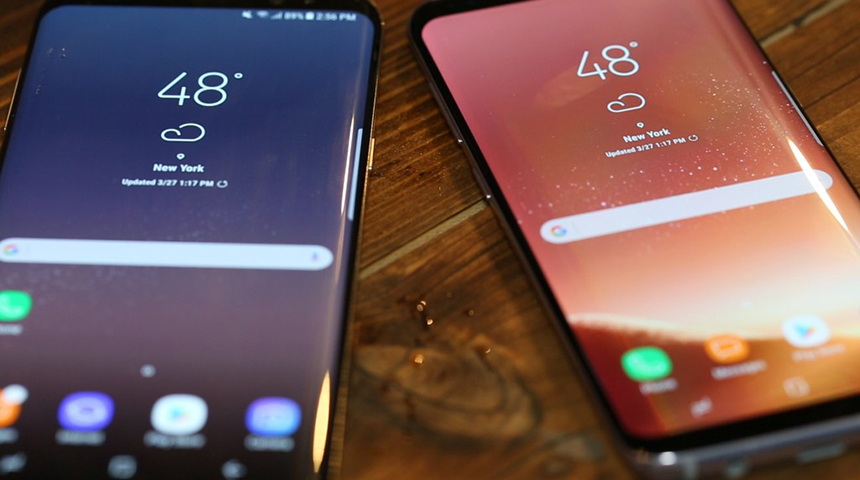Samsung S8 and S8 + launch
The S8 and S8 + are one of the first two smartphones supporting LTE speeds of 1 Gb / s with Snapdragon 835 and Exynos 8895 chips.
Samsung unveils Galaxy S8 Unpacked 2017 event, where Samsung launches the Galaxy S8 duo, held in New York (USA).

At the event held in New York, Samsung has officially unveiled the super-mobile S8 and S8 +.
The biggest difference between the two models is the screen size. The Galaxy S8 has a 5.8-inch screen, while the S8 + has a 6.2-inch screen. They both use Super AMOLED technology with 18.5: 9 aspect ratio, resolution (1,440 x 2,960 pixels).
Samsung's two new smartphones support HDR10 technology (not Dolby Vision support), like the Samsung Galaxy Note 7. Samsung teamed up with Amazon to bring HDR content to this product. The company also said S8's screen technology was initially certified Ultra Dymanic Range, but specific information has not been announced yet.Home button hard on many generations of Galaxy S has completely disappeared, replaced by force button on the screen. Samsung said the response of the Home button is better than Apple products.
Try the Galaxy S8 +: Large, compact screen size Galaxy S8 + 6.2-inch screen, however, the size of the machine similar to the 5.5-inch model is on the market.
These two devices have a new button to "call" virtual assistant Bixby. Bixby is responsible for three tasks including responding to user voice commands. Not merely listening, it can see the world around the user.
Its image recognition capabilities can help discover destinations and search for products on Amazon. It also has a hub on the home screen similar to Google Now.
Bixby will be the hub for Samsung's IoT eco-system. The company expects by 2020 that most of its smart products will be connected and operated under Bixby's control.

About the camera, the Galaxy S8 owns a 12 megapixel Dual Pixel sensor with improved software. It will take pictures at different exposures to enhance image quality. The camera selfie on the S8 now uses an 8 megapixel sensor with smarter face recognition.
The Galaxy S8 and S8 + are two of the first smartphones to support 1G byte LTE, thanks to the Snapdragon 825 and Exynos 8895 chipsets (alongside Sony's Xperia ZX Premium). The performance of these two chips is said to be equivalent.
The Galaxy S8 in most markets will have 4 GB of RAM, 64 GB of storage. Some markets like China, Korea will have a 6 GB / 128 GB version.
Reader Comments




